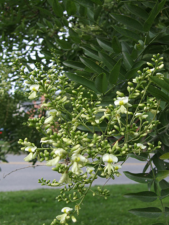Japanese Pagoda Tree Quercetin

Japanese pagoda tree sophora japonica will develop to be about 30 40 feet or more in height at their mature age with a spread to match.
Japanese pagoda tree quercetin. Sophora japonica is a species of tree in the subfamily faboideae of the pea family fabaceae. Overview information pagoda is a tree. It was formerly included within a broader interpretation of the genus sophora the species of styphnolobium differ from sophora in lacking the ability to form symbioses with rhizobia nitrogen fixing. Our japanese pagoda tree sophora japonica extract is standardised to contain a minimum of 95 quercetin.
It belongs to the group of polyphenols and flavinoids. Styphnolobium japonicum l schott the japanese pagoda tree chinese scholar tree pagoda tree. As a whole it develops at a medium to fast pace. People take pagoda tree flowers buds and fruit for symptoms of menopause hemorrhoids vomiting and other conditions.
Quercetin has antioxidant properties. Its clusters of pale yellow flowers contain quercetin a flavonoid with cardiovascular and joint health properties due to its antimutagenic and anti inflammatory properties. In nature perhaps reaching 50 75 feet and less frequently to 100 feet it tends to have a spreading round canopy with a normal clearance of 3 feet from the ground. The seeds are used to make medicine.
Our extract the japanese pagoda tree is native to china.

















